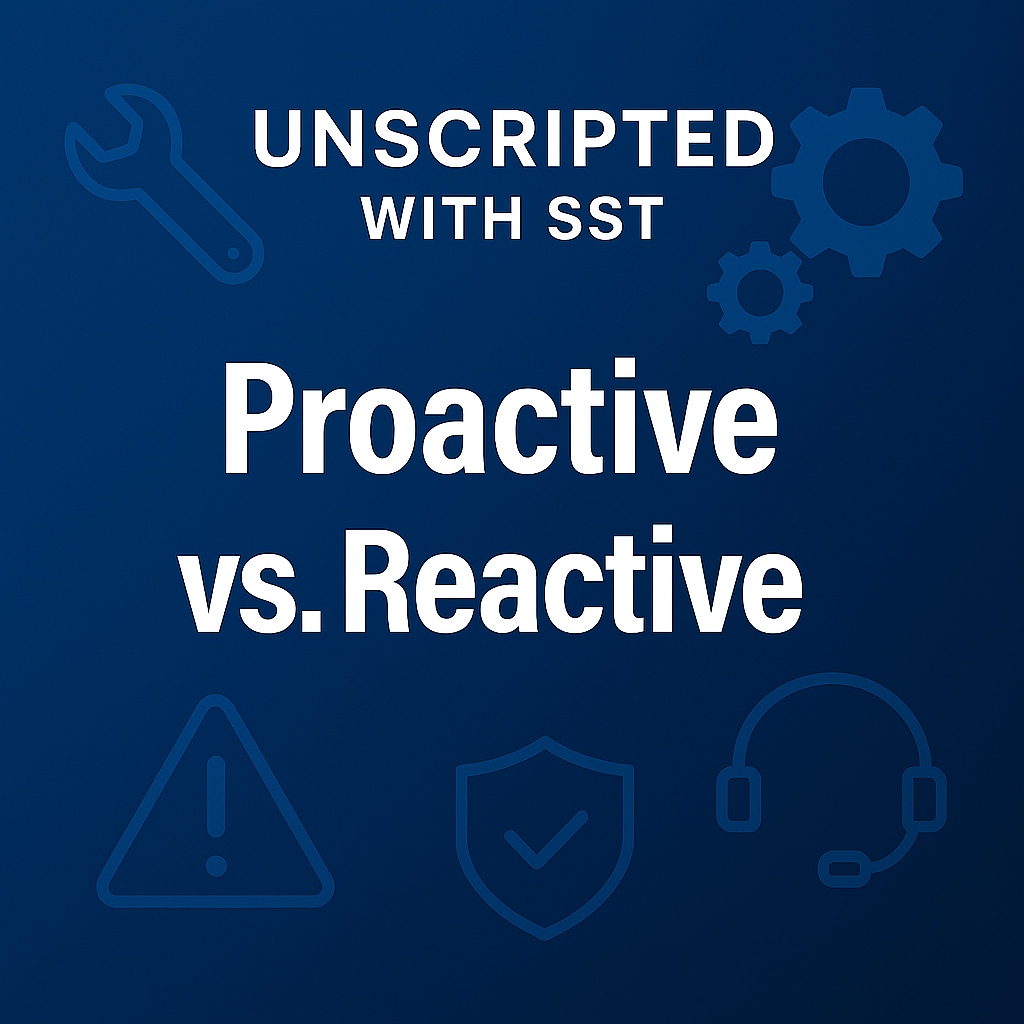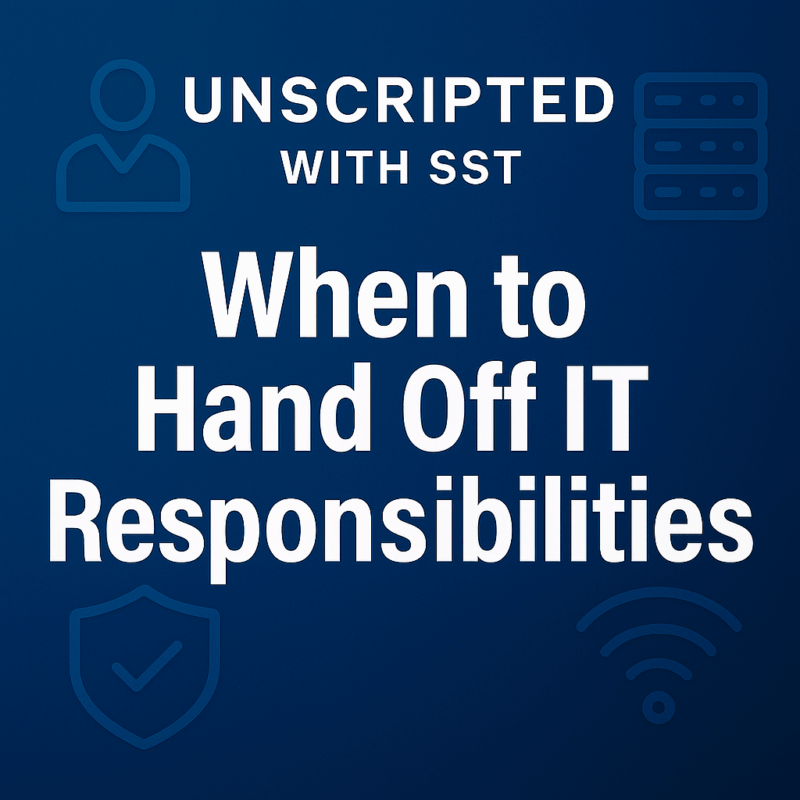Proactive vs Reactive – Unscripted With SST Episode One

Reactive vs. Proactive IT: What’s the Real Difference?
In this episode of Unscripted with SST, the spotlight is on a foundational issue in IT strategy: the difference between reactive and proactive support models. Tracy is joined by Beau Elston, COO of Secure Strategic Technology, who shares real-world insights on why this difference can dramatically impact a business’s operations, growth, and security posture.
Understanding Reactive IT Support
Reactive IT is the classic break-fix model. Something breaks, then you fix it. It’s a model many businesses default to, especially when they’re small or trying to manage costs. But the team highlights that this approach often leads to unpredictable disruptions, mounting technical debt, and missed opportunities for improvement.
It’s not just inefficient. It’s stressful. Both IT teams and employees get stuck in constant firefighting, which makes it hard to plan for growth or strategic improvements.
The Power of a Proactive Approach
Proactive IT is all about staying ahead of problems before they cause disruptions. This includes scheduled maintenance, constant monitoring, routine patching, security reviews, and aligning IT systems with overall business goals. The result is a more stable, predictable environment where technology works as it should.
Organizations that embrace proactive strategies benefit from reduced downtime, fewer surprises, and smoother day-to-day operations. Technology shifts from being a problem to solve into a tool that empowers growth and efficiency.
Why Reactive is Still So Common
Despite the advantages, many businesses still rely on reactive IT support. In most cases, this is due to legacy mindsets, limited resources, or a lack of awareness about better alternatives. Some companies view IT as a cost to contain rather than an investment to improve, which leads to short-term thinking and constant fire drills.
Even internal IT teams can fall into this trap when they’re stretched too thin. Without the right systems and support, they spend more time troubleshooting than planning. This is where partnering with an MSP can provide the tools, structure, and process needed to shift from reactive to proactive.
The ROI of Proactive IT
Investing in proactive IT is not just about avoiding problems. It is about creating long-term value. Fewer outages mean more productivity. Automated processes free up staff to focus on higher-impact work. Regular reviews and system improvements help align technology with company goals.
Proactive environments are also more secure and compliant. Security risks are identified earlier. Backups are tested. Configurations are reviewed. These steps do not just reduce risk, they save money in the long run by preventing costly downtime and data loss.
Choosing the Right Partner Matters
Not every IT provider offers truly proactive service. Some may talk about planning and prevention but still rely heavily on reacting to tickets and issues. A mature MSP brings process, documentation, and discipline to the table.
The right partner will focus on long-term alignment, not just short-term fixes. That includes quarterly reviews, strategic planning sessions, clearly defined standards, and continuous improvement across the board. Businesses should expect more than just uptime. They should expect insights, guidance, and measurable progress.
Final Thoughts
Shifting from reactive to proactive IT is one of the most important decisions a business can make. It reduces friction, improves reliability, and opens the door to smarter growth. When IT runs smoothly, the entire organization benefits.
Partnering with a mature MSP like SST brings the tools, structure, and strategy needed to make that shift possible. With the right support in place, businesses can stop putting out fires and start focusing on what moves them forward.

